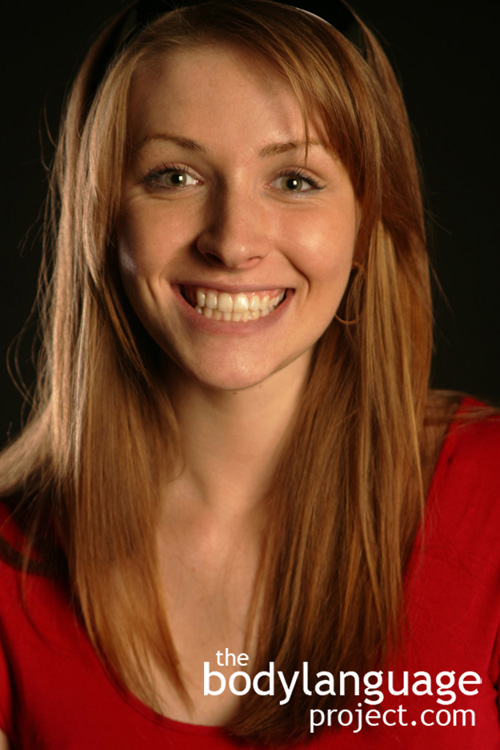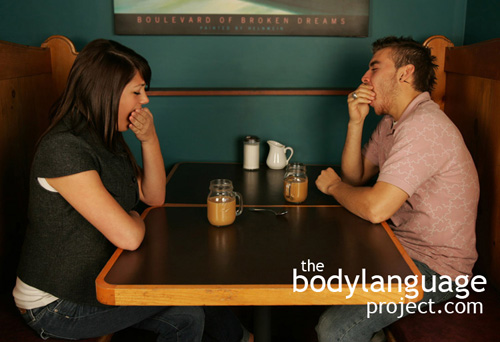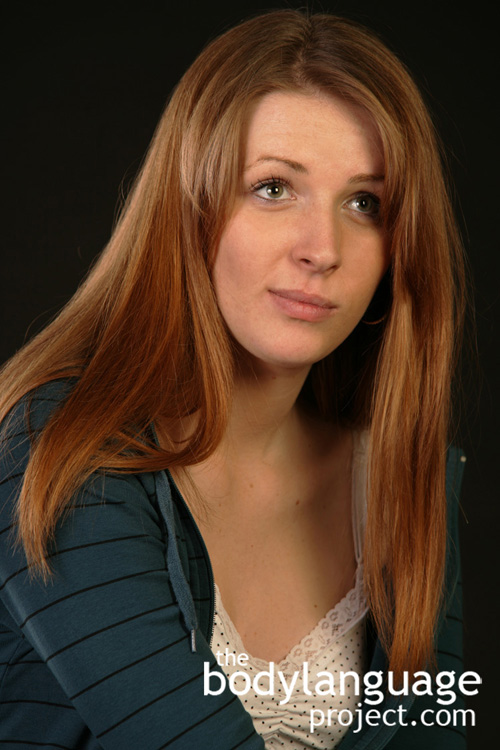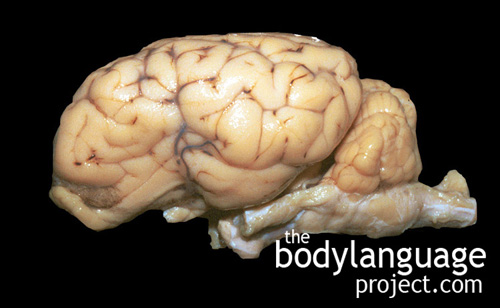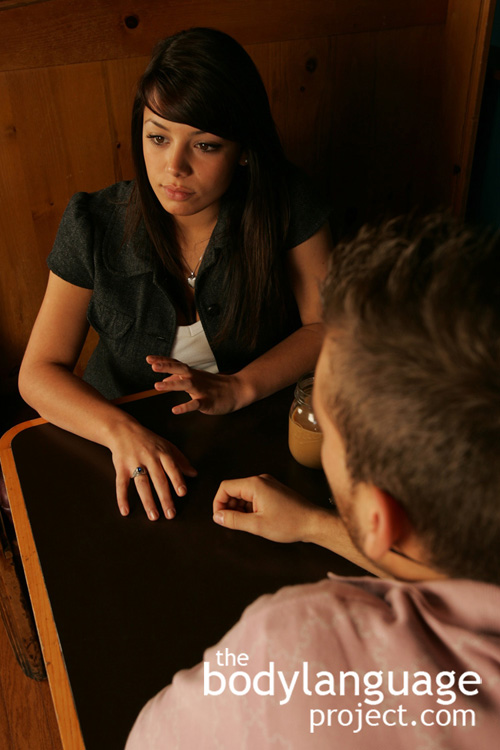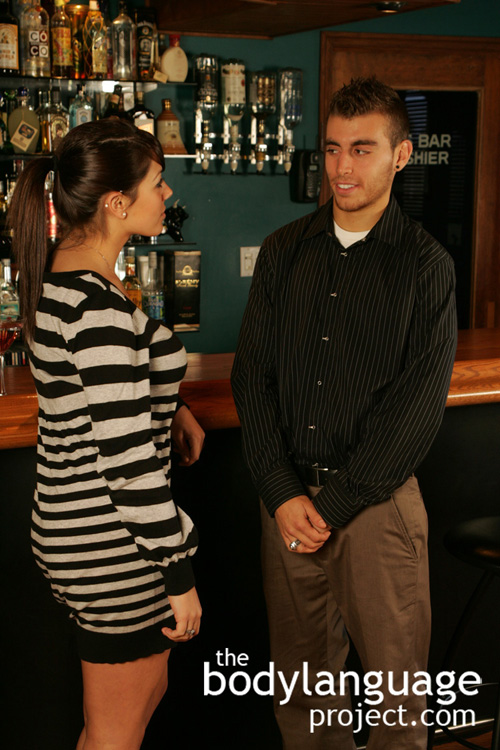
There’s an entire subtext of information just waiting to be read!
Fortune tellers are particularly adept at intuitively reading other people’s body language, even if they aren’t consciously aware of their talent. In fact, most fortune tellers will probably deny that they use any body language at all in their predictions. However, after reading this book, follow along with them and you will see that it’s fairly easy to read along with them, or at least follow their train of thought as they pull at straws. You can often tell when the person being read gives off certain clues to indicate (perhaps subconsciously) when they are on the right track. A large part of telling fortunes relies on people’s natural desires to please others, and in this respect, willing participants are fairly generous.
In the late 1800’s a German based high school teacher Von Osten was studying phrenology which is a now discredited theory that intelligence, character and personality traits are based on the shapes and bumps on someone’s head. Van Osten was also interested in the study of animal intelligence and believed that people had underestimated the reasoning skills of animals. That’s when he began tutoring a cat, horse and a bear in the ways of mathematics. Predictably, the cat was aloof to his teachings and the bear was downright hostile, but the stallion named Hans showed promise. With more focused lessons, Hans was able to learn to use his hoof to tap out numbers written on a blackboard. With practice, Hans was reliably able to perform this ‘feet’ for any number under ten.
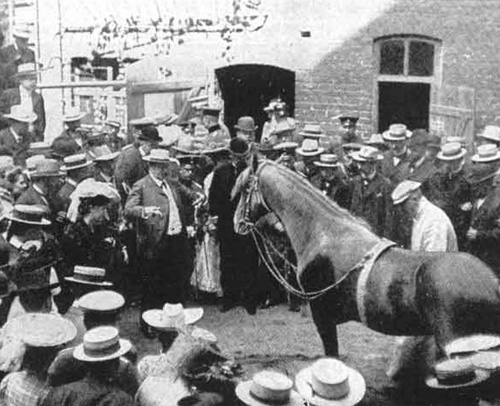
“Unconscious cuing” has been reported in more than just a horse. ‘The Curious Case of Clever Hans’ has lead psychologists and animal communication experts to look for the phenomenon in dogs who follow their owners’ facial expressions. Photo credit: Public Domain.
Von Osten steeped things up a notch by drawing out basic arithmetic problems such as square roots, and fractions. To Van Osten’s delight, Hans was able to keep up with the new teachings and proved to be a very clever horse which helped to maintain Von Osten’s original assertions about animal intelligence. Happy with his progress, Von Osten began to tour Germany with Hans so that others could enjoy his talents.
Han’s could answer simple questions such as “What is the square root of sixteen?” by following up with four taps, “What is the sum of two and three?” with five taps coming from Hans. Hans was also capable of spelling out words with each tap representing a letter of the alphabet in sequence. Thus, an “a” would be one tape and a “b” would be two taps. While Hans wasn’t always one hundred percent accurate he was on par with an average highschooler’s scores, which impressed his crowds.
Naturally, skeptics grew larger and larger. Germany’s board of education then requested an investigation into Hans’ abilities. Von Osten agreed as he had nothing to hide and knew there was no fraud to expose. The ‘Hans Commission’ was assembled including zoologists, psychologist, a horse trainer, several school teachers and a circus manger. After extensive testing, however, they concluded that there was no trickery involved and that Hans’ responses where genuine.
Having found no trickery the Commission passed the investigation onto Oskar Pfungst, a psychologist. He had some unique ideas on how to get to the bottom of things. As usual, Hans answered all the questions posed by Von Osten well under normal conditions but when asked to step further away however, Hans’s success rate dropped inexplicably. The success rate also dropped to close to zero when the questioner wasn’t himself aware of the answer. The same result came when the questioner was hidden from view. Hans’ success therefore, was severely tied to his ability to see the person who knew the correct answer.
Pfungst continued the research but turned his focus onto the people that were interacting with Hans. He noticed that there were differences in breathing, posture and facial expressions as Hans tapped out his answer. As Hans neared to correct answer, the handlers would increase the tension they held in their body language which would tip off Hans. Once the final tap had been made, the tension suddenly disappeared from the person and so Hans took this cue to mean it was time to stop tapping.
While Hans was discredited from being able to do math, he was very learned at reading human body language. It revealed that horses had a keen ability to read non verbal cues perhaps as part of their social interactions with other horses throughout their evolution. Hans’ ability to read body language might also help explain why horse whisperers are able to “talk” to horses. Von Osten never fully accepted this explanation and continued to tour Germany with his show and remained quite successful even though Hans never really had any comprehension of math.
What fortune tellers do isn’t much different from what Hans’ the horse did. Tellers are able to pick up on subtle body language clues and navigate these cues throughout a reading. They pick up on small gestures that indicate they are on the right track which further fuels them and induces the person being read to loosen up. They also rely on probability statistics to make educated guesses and knowledge of human nature and psychology. What makes them even more believable is the fact that some aren’t even consciously aware of their ability to read body language which helps them keep their techniques a secret. This gives them an advantage in fooling the gullible since it’s much easier to deceive others when you first have yourself convinced. People being read also have a positive expectation that they will be read correctly and play into readers more readily often being quite charitable even when their predictions are only remotely accurate. It would be much harder for a reader to accurately read a skeptic, but any good teller will avoid reading these people. Fortune tellers have also been accused of being vague and general which could be accurate for just about anyone. Fortune tellers hit on many different subjects often contradicting themselves until they hit on information that sticks.
So before you get taken by a fortune teller remember how Hans and his owner where able to amaze so many. Even after the tests showed that Hans was reading his master’s body language his show continued to go on for years un-deterred and even grew more in popularity as time passed.


